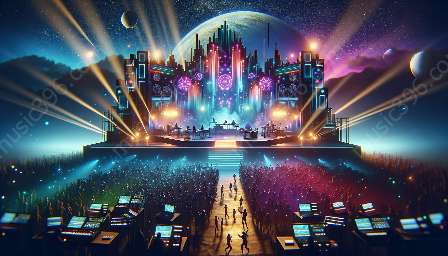Electronic music is a diverse and constantly evolving genre that encompasses a wide range of artistic styles and expressions. Within this dynamic landscape, sound design plays a crucial role in shaping the artistic style of electronic music.
The Role of Sound Design in Electronic Music
Sound design refers to the process of creating, manipulating, and arranging audio elements to achieve a desired sonic outcome. In electronic music, sound design is a fundamental aspect that encompasses the synthesis of sound, the use of audio effects, and the manipulation of various parameters to create unique and expressive sonic textures.
Shaping Artistic Style
Sound design directly influences the artistic style of electronic music by providing the sonic palette through which artists express their creative ideas and emotions. The following are key elements of how sound design impacts the artistic style in electronic music:
- Timbre and Texture: The timbre and texture of sounds created through sound design contribute significantly to the overall artistic style of electronic music. Whether it's the warm, analog-like tones of vintage synthesizers or the futuristic, otherworldly textures of digital synthesis, sound design choices directly shape the sonic identity of the music.
- Rhythmic Complexity: Sound design techniques such as crafting intricate rhythmic patterns through the manipulation of percussion and synthesized sounds can define the rhythmic complexity and groove of electronic music, ultimately influencing its artistic style.
- Mood and Atmosphere: Sound design can evoke specific moods and atmospheres within electronic music, ranging from ethereal and introspective to energetic and driving. Enveloping textures, ambient drones, and evolving soundscapes contribute to the overall emotional impact and artistic expression in the music.
- Sonic Innovation: Innovative sound design approaches push the boundaries of artistic expression in electronic music. By experimenting with unconventional sonic treatments and boundary-pushing soundscapes, artists can carve out unique artistic styles that challenge traditional norms.
Exploration and Experimentation
Sound design in electronic music encourages artists to explore and experiment with a vast array of sonic possibilities. This open-ended approach to sonic exploration allows for the development and evolution of unique artistic styles within the genre.
Technological Advancements
The rapid advancements in technology have expanded the possibilities of sound design in electronic music. Cutting-edge software, hardware synthesizers, modular setups, and digital audio workstations provide artists with unparalleled creative tools to craft their sonic identity and embark on sonic adventures that define their artistic style.
Conclusion
The effect of sound design on the artistic style in electronic music is profound and multifaceted. From shaping sonic textures and rhythm to influencing mood and atmosphere, sound design serves as a powerful vehicle for artistic expression within the electronic music genre. As technology continues to unfold new sonic horizons, the impact of sound design on artistic style will undoubtedly continue to push the boundaries of creative exploration and innovation in electronic music.


